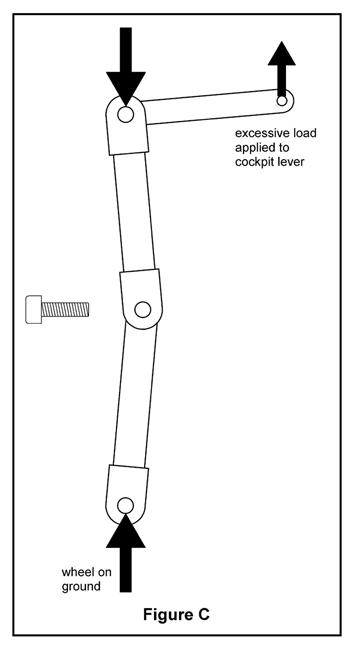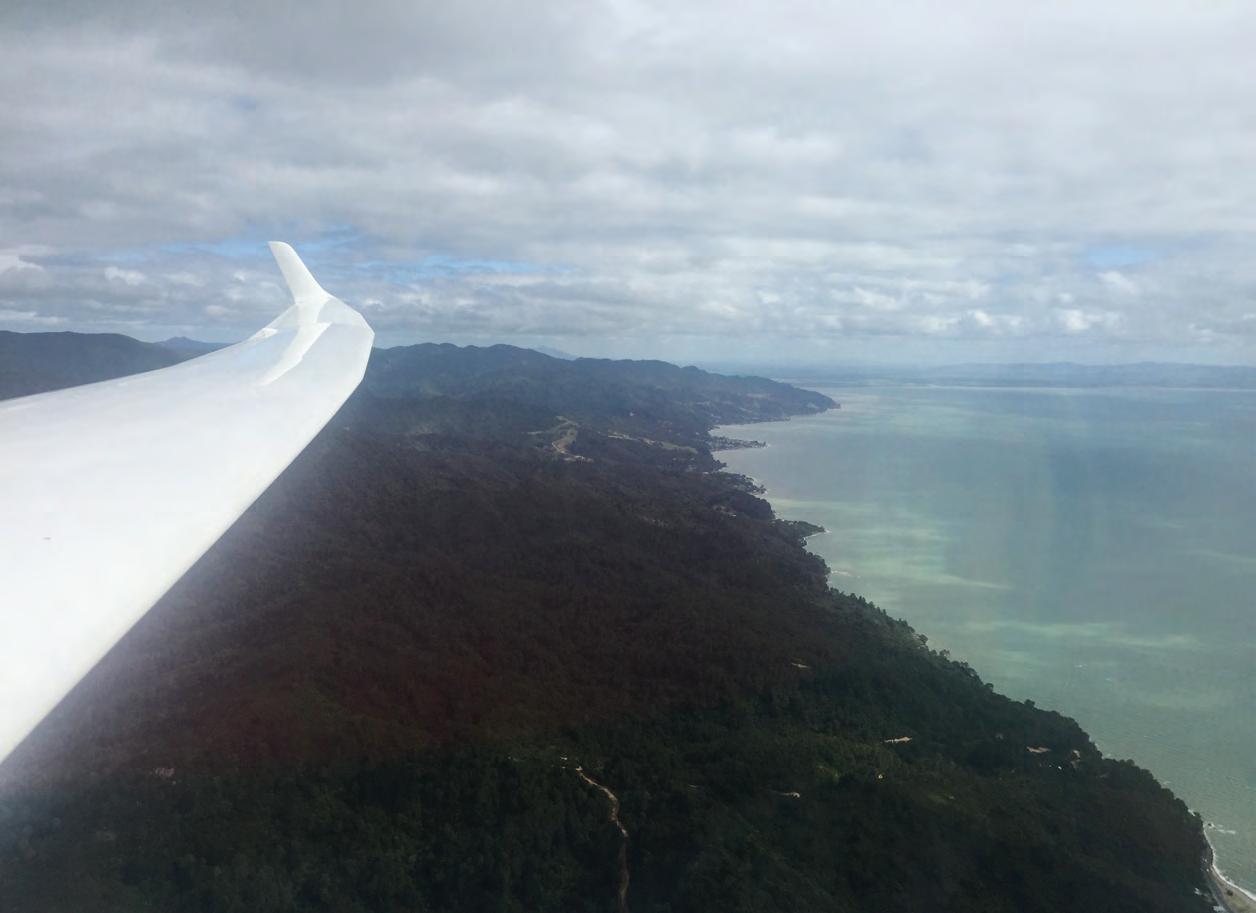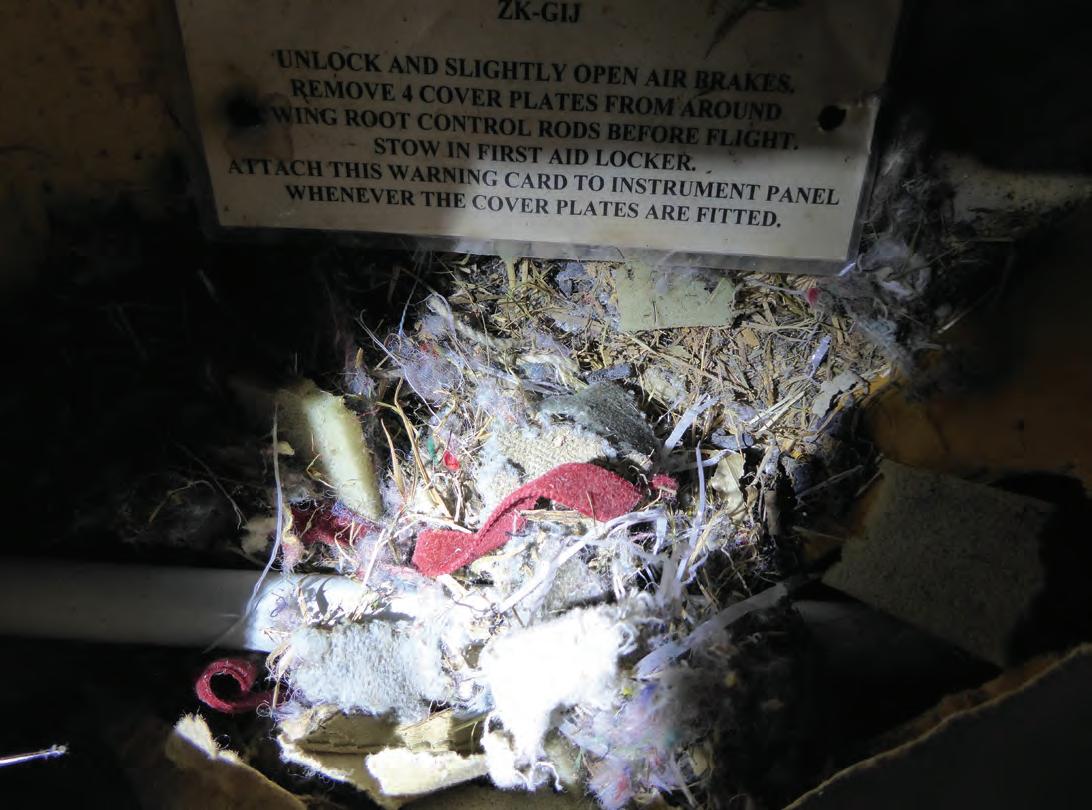
3 minute read
The Contest Director's Report – National Open and Racing Class Gliding Championships
from SoaringNZ Issue 48
by mccawmedia
National Open and Racing Class Gliding Championships THE CONTEST DIRECTORS REPORT
BY CLIVE GEDDES
Advertisement
Omarama, 2–14 January, 2017
ORGANISATION The contest was organised by the Omarama Soaring Centre Convenor: Max Stevens Contest Director: C live Geddes Safety Officer: T revor Mollard Scorers: Lex McPhail and Neil Allison Treasurer: Laurie Kirkham Chief Tow Pilot: B rad Newfield Weatherman: L emmy Tanner Task setting: G avin Wills with assistance from Lex, Lemmy, Max and Keith Essex. This is an extremely experienced team who produced a safe, intense competition in extremely unsettled weather patterns which created demanding and robust soaring conditions.
TOWING AND GROUND OPERATIONS Tows from: Glide Omarama, the Canterbury Gliding Club and MAV, a privately owned tow plane. The grid was managed by the Contest Director with help from non-competing pilots, competitors’ wives and the radios were competently manned by competitors’ wives and the scorers.
AIRSPACE A Memorandum of Understanding (MOU), negotiated between Air Traffic Control NZ (ACNZ) and Gliding New Zealand, enabled access to a ‘Roxburgh’ sector. ACNZ Christchurch was provided with the daily tasks and competitors registrations and readily agreed to requests for airspace.
ENTRANTS Open Class: 11 (4 North Island, 2 overseas, 1 withdrawal, 2 day entries only) Racing Class: 12 (4 North Island, 5 overseas, 3 day entries only)
TASKS Tasks were set and completed for six of the 12 competition days. A number of experienced pilots agreed that on several of the task days the conditions were the most demanding they had ever flown.
SUMMARY The competition was characterised by low entries (whilst it is recognised that a number of potential competitors were in Australia for the Worlds), unseasonable and extremely variable weather leading to six non fly days, demanding flying conditions and close and intense competition. The organisation group worked seamlessly and the task setting group met all of the challenges imposed by the weather to produce tasks that were appropriate for determining a national championship.
RESULTS The trophies were presented at the closing dinner, attended by over 60 people, held at the Countrytime Hotel, after a no fly day, on 14 January.
Open Class Champion
David Speight Trophy M ike and Nicholas Oakley
Highest Placed Unhandicapped
Wills Trophy Mike and Nicholas Oakley The Highest Placed Open Class was Keith Essex but the trophy was awarded to the Oakley's as the highest placed New Zealand entrants.
Highest Placed FAI 18m
Georgeson Trophy K eith Essex
Racing Class Champion
Bill Walker Trophy Vaughan Ruddick
Highest Placed FAI Standard Class
Court Trophy Tony van Dyk
Highest Placed FAI 15m
Broadland Trophy Vaughan Ruddick
Most Meritorious Flight
Hansell Trophy M ike and Nicholas Oakley
Second Placed Glider in Largest Class
Swiss Trophy T ony van Dyk
Highest Speed Unhandicapped
Richardson Trophy Doug Hamilton
Winner of the Longest Speed Task
Continental Airlines Trophy Doug Hamilton
COMMENTS The no contest days presented ample opportunities to discuss the state of the competition environment in New Zealand. The following are my personal comments which in part repeat some of those matters covered by the contest pilots. ›› The average age of competition pilots has steadily increased.
A number of those who competed in the first nationals held in 1964 competed in the 2017 event. There is a wide range of barriers to competitive flying. Experience, time cost, monetary cost, time of year, location, competition length, which competition where, glider suitability and availability, encouragement and opportunity are but a few. There is an urgent need for a case study to be undertaken so that all of the issues and barriers to competition flying can be understood, addressed and remedied. ›› Recreational and competition soaring from Omarama is rapidly becoming compromised by the continual alienation of airspace to the south of the field. Gliding New Zealand must find the resources to provide professional support for its airspace advocates in order to limit and reverse, where possible, the airspace constraints being imposed south of Omarama. ›› Finding personnel or clubs to undertake contest organisation and management appears to be increasingly difficult. The challenges faced by those who have the experience and willingness to undertake the staging of contests are very much those faced by competitors. Competition organisation and management needs to be addressed in the case study referred to in first comment above.










